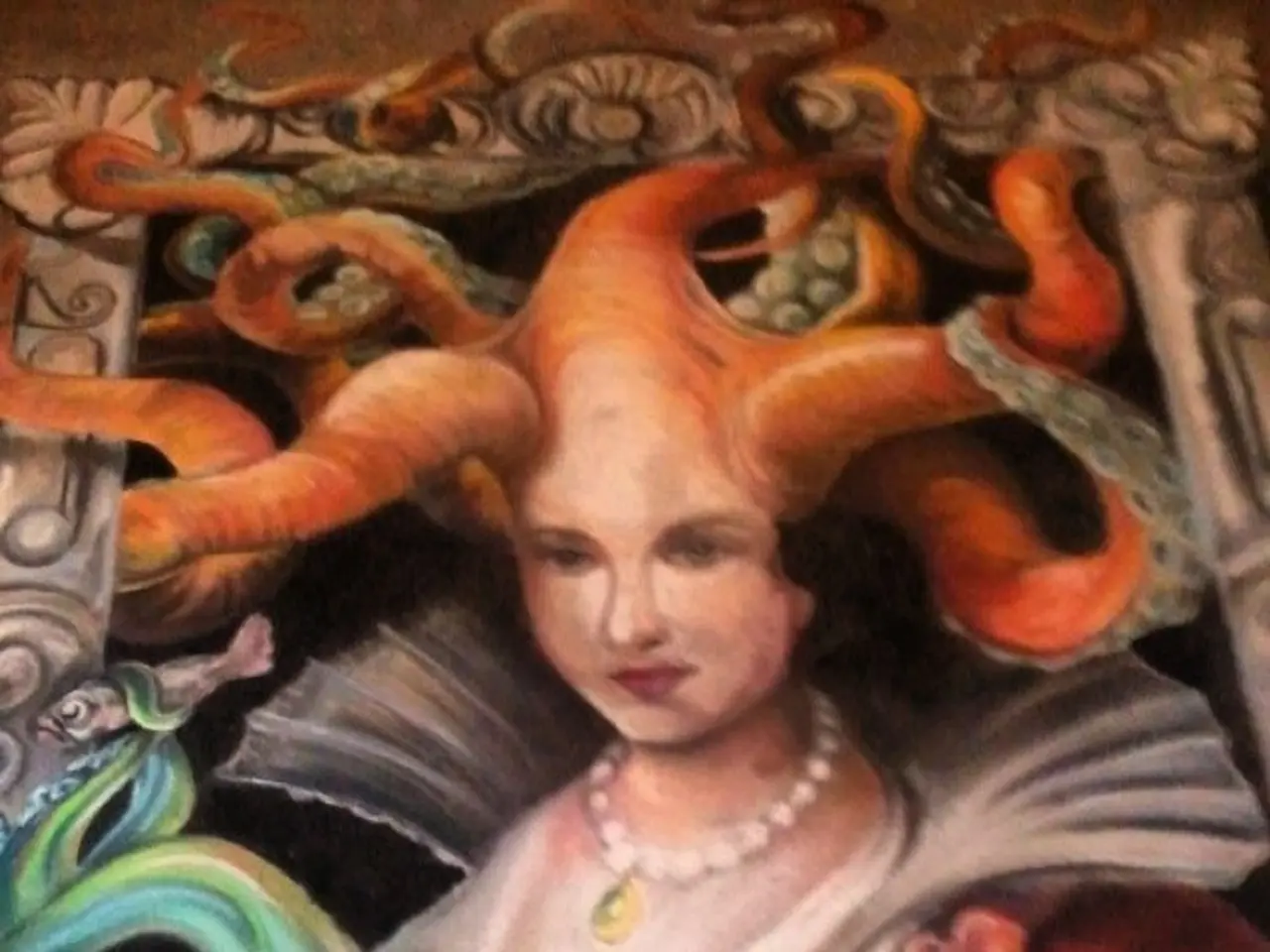Legendary Mexican Artist Frida Kahlo: The Forces Behind Her Painted Genius - Known for her groundbreaking works, this piece delves into Frida Kahlo, the iconic Mexican artist.
Artist Frida Kahlo's Life and Impact
Frida Kahlo, a renowned Mexican artist, was born in 1907 in Coyoacán, Mexico City, to a German father and a mestiza mother of Purépecha descent. Growing up, she lived with four sisters and two half-sisters, and her mother taught them housework, embroidery, and sewing.
At the age of six, Frida fell ill with polio, which delayed her school start and left her with a weakened right leg. This early health struggle would continue to impact her life and art.
In 1922, Frida was accepted to the National Preparatory School where she immersed herself in Mexican culture and political activism, embracing a new Mexican identity and engaging with revolutionary ideals.
However, life took a dramatic turn in 1925 when Frida was involved in another major accident at the age of 18. The bus accident resulted in multiple fractures, including in her spine, pelvis, ribs, and right leg, along with a dislocated shoulder and injuries to her abdomen and uterus. This traumatic event led to lifelong chronic pain, over 30 surgeries, and many hospitalizations, profoundly shaping her art and themes.
After the accident, Frida started painting to pass the time. Her art became highly personal, focusing on themes of pain, identity, feminist issues, and Mexican culture. Her physical suffering, miscarriages, and relationships, especially with Diego Rivera, deeply influenced her works.
In the post-accident years, Frida's art served as a means of expression and coping with pain. Her exploration of identity tied to her mixed heritage and political beliefs was inseparable from her bodily experiences of suffering and resilience. Self-portraits made up 60 of her 143 works, vividly portraying her personal pain and fears.
Despite her physical limitations, Frida continued to create art and exert a significant influence on the art world. She underwent 32 operations in 29 years, requiring prolonged periods of immobility and wearing an iron corset or full body cast. Despite these challenges, Frida's willpower and passion were vital for her recovery.
Frida's husband, Diego Rivera, is known for his infidelity, including an affair with Frida's younger sister. Frida engaged in affairs with both women and men as a response to her husband's infidelity. Despite their tumultuous relationship, Frida and Diego divorced after ten years but remarried a year later.
Frida's health struggles continued throughout her life, and she died at the age of 47 from a pulmonary embolism. Even in her final days, Frida continued to make an impact. Despite being bedridden, she attended her first exhibition in Mexico in 1953 and her work remains influential today.
Frida Kahlo’s early health struggles — childhood polio and the catastrophic bus accident — were pivotal, transforming her personal pain into artistic creativity and a revolutionary portrayal of selfhood and Mexican identity.
The Commission could consider exploring the impact of Frida Kahlo's medical conditions, particularly polio and the bus accident, on her art, notably in the realm of health-and-wellness and lifestyle. Frida's relentless pursuit of her craft even amidst science-related challenges could be a compelling case study for dialogues in science and art.




